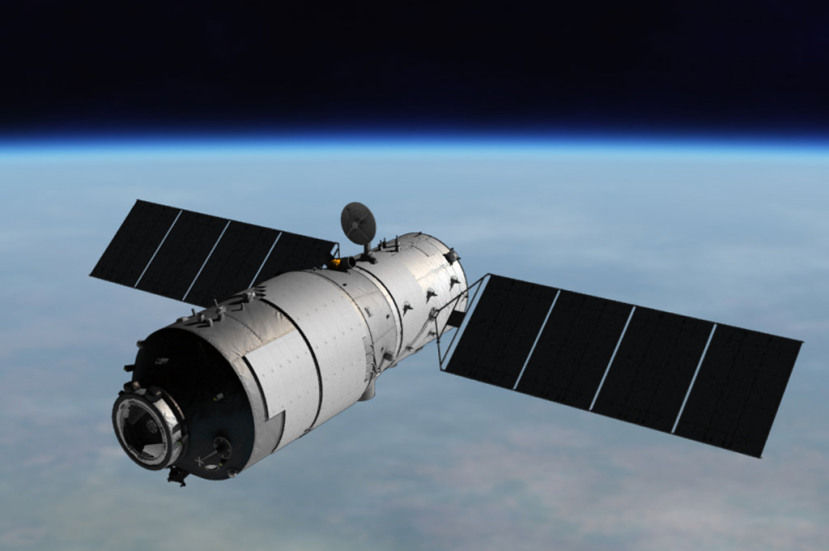
China's Tiangong-1 Space Lab Expected to Fall to Earth in 2 to 3 Weeks

The European Space Agency’s (ESA) Space Debris Office in Darmstadt, Germany, has issued a new update on the expected re-entry of China’s Tiangong-1 space lab.
The new forecast, which was issued March 15, predicts that the 8.5-ton Tiangong-1 will fall back to Earth between March 30 and April 6, though it stresses that this is a rough estimate.
Re-entry of the Chinese hardware will take place anywhere between 43 degrees north latitude and 43 degrees south latitude — a huge swath that most of the world's population calls home. [China's Tiangong-1 Space Lab in Pictures]
"At no time will a precise time/location prediction from ESA be possible," Space Debris Office officials wrote in the update.
Tiangong-1, the first space station built by China, launched in late September 2011. The first Chinese orbital docking occurred between Tiangong-1 and an unpiloted Shenzhou spacecraft on Nov. 2, 2011. Two piloted missions visited Tiangong-1 as well: Shenzhou 9 and Shenzhou 10, in June 2012 and June 2013, respectively.
Leonard David is author of "Mars: Our Future on the Red Planet," published by National Geographic. The book is a companion to the National Geographic Channel series "Mars." A longtime writer for Space.com, David has been reporting on the space industry for more than five decades. Follow us @Spacedotcom, Facebook or Google+. This version of the story published on Space.com.
Get the Space.com Newsletter
Breaking space news, the latest updates on rocket launches, skywatching events and more!
Join our Space Forums to keep talking space on the latest missions, night sky and more! And if you have a news tip, correction or comment, let us know at: community@space.com.

Leonard David is an award-winning space journalist who has been reporting on space activities for more than 50 years. Currently writing as Space.com's Space Insider Columnist among his other projects, Leonard has authored numerous books on space exploration, Mars missions and more, with his latest being "Moon Rush: The New Space Race" published in 2019 by National Geographic. He also wrote "Mars: Our Future on the Red Planet" released in 2016 by National Geographic. Leonard has served as a correspondent for SpaceNews, Scientific American and Aerospace America for the AIAA. He has received many awards, including the first Ordway Award for Sustained Excellence in Spaceflight History in 2015 at the AAS Wernher von Braun Memorial Symposium. You can find out Leonard's latest project at his website and on Twitter.









